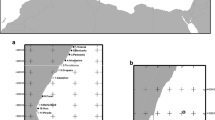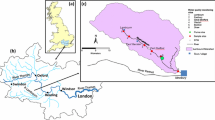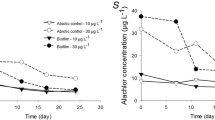Abstract
Receiving water impacts of point source discharges to the Gulf of Mexico are seldom reported on indigenous flora. The objective of this research was to evaluate the ability of colonized periphyton to provide this information. Water quality and biomass and pigment concentrations of the periphyton were determined at 27 stations located above and below 8 wastewater discharges. Most physicochemical parameters and concentrations of pesticides and PCBs were either unchanged or below detection in the receiving waters, which contrasted occasional increases in concentrations of several trace metals and nutrients. The response of the periphyton was specific to the wastewater, colonization station, response parameter, and colonization period. Statistically significant differences in biomass and pigment content occurred for at least one colonization station located below each of the eight outfalls. This represented a total of 18 of the 21 stations located in wastewater-impacted areas. Phytostimulation was more common than inhibition. Ash-free dry weight increased, on average, by 181% (± 1 SD = 123%) and chlorophyll a increased by 356% (± 593%) in wastewater-impacted areas. The in situ phytostimulation paralleled the stimulatory trend observed in standardized NPDES whole effluent tests conducted with cultured microalgae for four of eight wastewaters. The use of colonized periphyton as an indicator of wastewater impact was not simple. Spatial variation in response needs consideration to ensure relevancy of the results if this assessment methodology is used for near-coastal wastewater hazard evaluations.
Similar content being viewed by others
Author information
Authors and Affiliations
Additional information
Received: 29 September 2001/Accepted: 7 January 2002
Rights and permissions
About this article
Cite this article
Lewis, M., Weber, D. & Moore, J. An Evaluation of the Use of Colonized Periphyton as an Indicator of Wastewater Impact in Near-Coastal Areas of the Gulf of Mexico. Arch. Environ. Contam. Toxicol. 43, 11–18 (2002). https://doi.org/10.1007/s00244-001-0054-x
Issue Date:
DOI: https://doi.org/10.1007/s00244-001-0054-x




